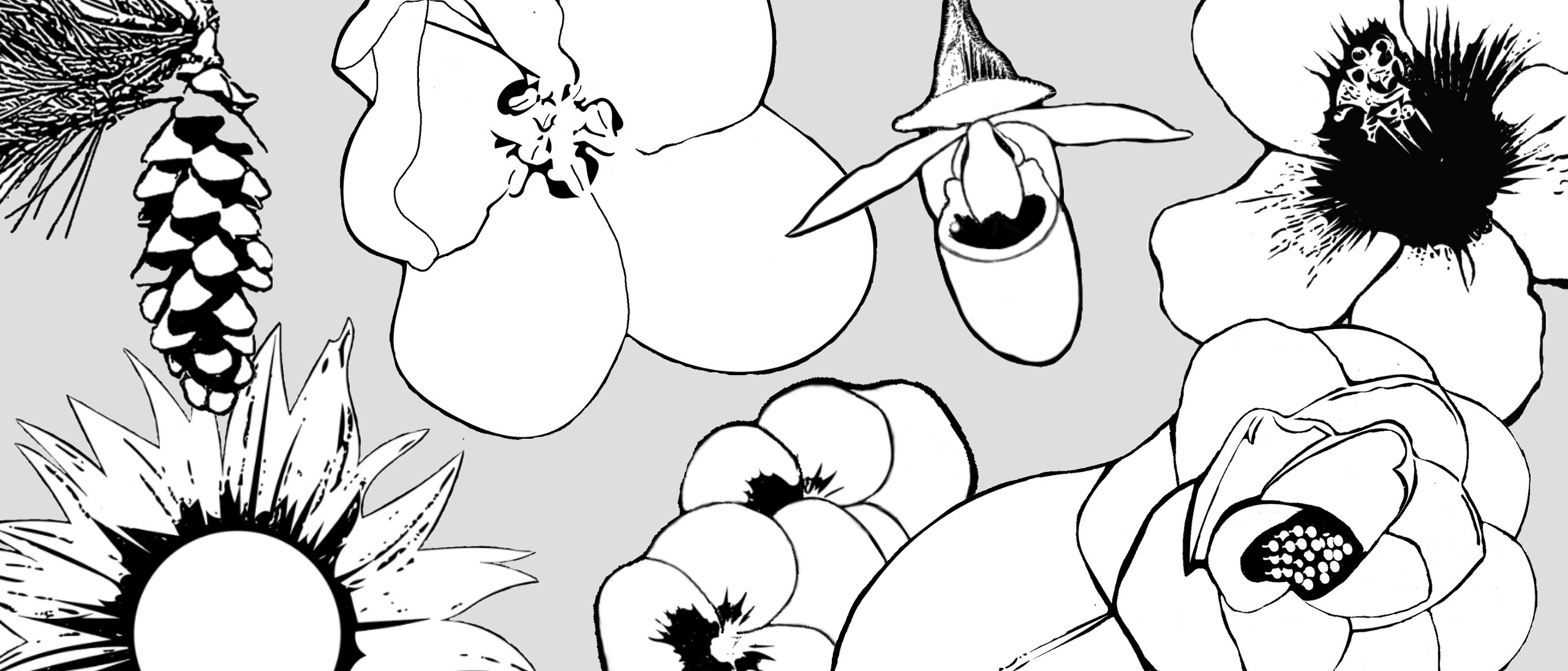
Coloring Activity – Language of Flowers
Visual storytelling has long played a crucial role in language and communication. Today, we use emoticons, also known as emojis, to communicate an array of thoughts, emotions, and experiences. These symbols have developed both universal and personal meanings that, much like written language, continue to evolve the more they are used. Download all the coloring pages together.
Before we had emojis and texting, people devised other ways to communicate symbolically. During the Victorian era, in the reign of England’s Queen Victoria (1837-1901), flowers were used to send messages much like emojis. Flower meanings could vary depending on many factors including color, species, or simply which guide or ‘flower dictionary’ people referred to at the time. Despite these differences, flowers were widely accepted as a way to tell stories and share messages.
Activity Procedure:
Using the Smithsonian Gardens’ guide to flower symbolism and coloring pages shown below, create your own floral messages. Use these flowers in the same way that you might use emojis while texting.
Follow these steps to make your own:
- Print out coloring sheets
- Color in the flowers
- Cut out the flowers
- Arrange the flowers to create unique bouquets that create a story
- Give this bouquet to someone you care about so that they can learn about the meaning of flowers, too
Remember to share your flower messages with Smithsonian Gardens social media (Facebook, Twitter, Instagram)!
Click on each flower to open the coloring page:

Scientific Name: Camellia japonica
Meaning: Pity
(Photo: By PumpkinSky – Own work, CC BY-SA 3.0)

Scientific Name: Aquilegia coerulea
Meaning: Resolved to win
(Photo: Dr. Thomas G. Barnes, U.S. Fish and Wildlife Service)

Scientific Name: Hibiscus brackenridgei
Meaning: Delicate beauty
(Photo: By KarlM at English Wikipedia, CC BY-SA 3.0)

Scientific Name: Cypripedium reginae
Meaning: Capricious Beauty
(Photo: By NC Orchid from North Carolina, USA – 4 Cypripedium reginae, CC BY 2.0)

Scientific Name: Paeonia officinalis
Meaning: Bashfulness
(Photo: Quartl, Creative Commons Attribution-Share Alike 3.0 Unported license)

Scientific Name: Magnolia virginiana
Meaning: Perseverance
(Photo: By and (c)2008 Derek Ramsey (Ram-Man). Co-attribution must be given to the Chanticleer Garden.derivative work: Bff)

Scientific Name: Trifolium pratense
Meaning: Industry
(Photo: By Ivar Leidus – Own work, CC BY-SA 4.0)

Scientific Name: Rosa x hybrida
Meaning: Red – Love and devotion Yellow- A decrease of love White – I am worthy of you
(Photo: Moheen Reeyad, and released under the free license CC BY-SA 4.0 via Wikimedia Commons)

Scientific Name: Citrus x limon
Meaning: Discretion
(Photo: Davidbena, licensed under the Creative Commons Attribution-Share Alike 4.0 International license)

Scientific Name: Helleborus orientalis
Meaning: Scandal
(Photo: Tim McCormack, Creative Commons Attribution-Share Alike 3.0 Unported license)

Scientific Name: Digitalis purpurea
Meaning: A wish
(Photo: By Matthijs van den Berg – Own work, CC BY-SA 4.0, )

Scientific Name: Ranunculus spp.
Meaning: Riches
(Photo: under the license Creative Commons Zero)

















